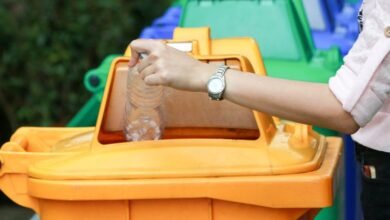OU researchers develop new technology to identify problems with roads and bridges below the surface

NORMAN, Okla. (KFOR) – As technology advances, the University of Oklahoma is partnering with the U.S. Department of Transportation to make roads and bridges safer after natural disasters like storms and floods. Research on campus will have an impact across the country.
“We are one of the states that has a lot of infrastructure and bridges. So we have similar needs as other parts of the country for this,” said Dr. Rockee Zhang, OU professor of electrical and computer engineering.
It’s a new ground-penetrating radar developed by researchers at the OU Radar Innovations Lab. The device attaches to a drone and works like a flying radar, scanning surfaces to identify problems beneath roads or bridges.
For example, when flooding causes damage to a road or bridge, inspections may detect surface damage. However, this new radar technology can detect damage invisible to the human eye.
“Analysis can help us characterize what it might be, whether it’s rebar, a crack or something similar. But based on the drone’s view, we can see that there is something there. It will take post-processing to determine what is actually there,” said Kegan Reynolds, an OU electrical engineering student.
The ability to fly the radar will make surveying roads and bridges easier, faster and less time consuming.
“There are many infrastructures such as bridges, pavements and roads in the country that need to be monitored and inspected regularly for many defects. Right now, it’s time-consuming and labor-intensive. We hope our technology can help automate it and also improve its accuracy without adding too many people,” Zhang said.
The U.S. Department of Transportation awarded the school $15 million to fund the project, hoping it will save lives and improve safety on roads and bridges across the country.
“As extreme weather continues, not just here in Oklahoma but across the country, I am excited that experts from this region are leading the way in how others can learn, especially regarding climate change and our travel patterns. We still need to work. We still need to get to the hospital. And the leadership here at the university will be one that others can follow across the country,” said Robert Hampshire, deputy assistant secretary for Research and Technology at the U.S. Department of Transportation.
Developers say the device is still in its early stages, so it hasn’t been released yet. They also hope to make other improvements to the radar as they continue to work on the project.




